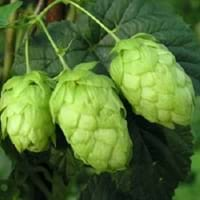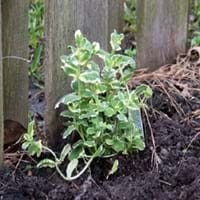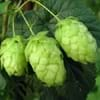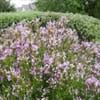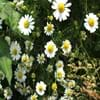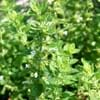Life Span
Perennial
Perennial
Origin
North America, Europe, Western Asia
Southern Europe
Types
lupulus , cordifolius , lupuloides , neomexicanus , pubescens
Not Available
Number of Varieties
Not Available
Habitat
ditches, Lake margins
Cultivated Beds, Dappled Shade, Shady Edge, Sunny Edge, Woodland Garden
USDA Hardiness Zone
4-8
6-9
Sunset Zone
A2, A3, 1a, 1b, 2a, 2b, 3a, 3b, 4, 5, 6, 7, 8, 9, 10, 14, 15, 16, 17, 18, 19, 20, 21
4, 5, 6, 7, 8, 9, 10, 11, 12, 13, 14, 16, 17, 18, 19, 20, 21, 22, 23, 24
Habit
Vining/Climbing
Spreading
Flower Color
Green, Magenta
White, Pink
Flower Color Modifier
Bicolor
Bicolor
Leaf Color in Spring
Chartreuse, Yellow green
White, Light Green
Leaf Color in Summer
Dark Green, Light Yellow, Yellow green
White, Light Green
Leaf Color in Fall
Yellow, Yellow green
White, Light Green
Leaf Color in Winter
Light Green
Light Green
Leaf Shape
Lobed and toothed
Oval
Plant Season
Spring, Summer, Fall
Spring, Summer, Fall
Sunlight
Full Sun, Partial Sun
Partial Sun, Partial shade
Type of Soil
Clay, Loam
Clay, Loam, Sand
The pH of Soil
Acidic, Neutral
Acidic, Neutral
Soil Drainage
Average
Poorly Drained
Tolerances
Drought
Drought
Where to Plant?
Ground
Container, Ground, Pot
How to Plant?
Semi-hardwood cuttings, Softwood cuttings
By dividing rhizomes, tubers, Stem Cutting
Plant Maintenance
Medium
Medium
Watering Requirements
Keep ground moist, Keep the Soil well drained
Average Water Needs, Do Not over Water, Requires regular watering
In Summer
Lots of watering
Lots of watering
In Spring
Moderate
Moderate
In Winter
Average Water
Average Water
Soil pH
Acidic, Neutral
Acidic, Neutral
Soil Type
Clay, Loam
Clay, Loam, Sand
Soil Drainage Capacity
Average
Poorly Drained
Sun Exposure
Full Sun, Partial Sun
Partial Sun, Partial shade
Pruning
In Early Autumn, Remove damaged leaves, Remove dead branches, Remove dead leaves
Prune in the growing season, Remove damaged leaves, Remove dead branches, Remove dead leaves
Fertilizers
All-Purpose Liquid Fertilizer, General purpose fertilizer with an NPK ratio 3-1-2
All-Purpose Liquid Fertilizer, Fertilize in early spring
Pests and Diseases
Aphids, Japanese Beetles, Red spider mite
Red blotch
Plant Tolerance
Drought
Drought
Flower Petal Number
Not Available
Single
Fragrant Bark/Stem
No
Yes
Foliage Texture
Medium
Medium
Foliage Sheen
Matte
Matte
Attracts
Beetles
Bees, Butterflies, pollinators
Allergy
Unknown
Itchiness, Skin rash, Stomach pain, Swelling
Aesthetic Uses
Cottage Garden, Farmland, Informal Hedge, Wild gardens
Bonsai, Showy Purposes
Beauty Benefits
Not Available
Good for skin
Environmental Uses
Air purification
Air purification
Medicinal Uses
anti bacterial, increase urine flow, Insomnia
Antiseptic, Digestive disorders, Fever, Headache
Part of Plant Used
extracted oil, Flowers
Fruits, Leaves
Other Uses
brewing beer
Added to salads, Used as essential oil, Used in making tea, Used to make herbal teas
Used As Indoor Plant
No
Yes
Used As Outdoor Plant
Yes
Yes
Garden Design
Bedding Plant, Edible, Feature Plant, Herb / Vegetable, Rock Garden / Wall, Vine
Bog Garden, Edible, Groundcover, Herb / Vegetable
Botanical Name
HUMULUS lupulus 'Aureus'
MENTHA suaveolens 'Variegata'
Common Name
Columbus Hops
Applemint, Variegated Applemint
In Hindi
साधारण राज़क
Applemint Tree
In German
Echter Hopfen
Applemint Baum
In French
Houblon
Applemint Arbre
In Spanish
Humulus lupulus
Árbol Applemint
In Greek
Columbus Hops
Applemint Δέντρο
In Portuguese
Lúpulo
Árvore applemint
In Polish
Chmiel zwyczajny
Applemint Drzewo
In Latin
Columbus Hops
Applemint ligno
Phylum
Magnoliophyta
Magnoliophyta
Class
Magnoliopsida
Magnoliopsida
Family
Cannabaceae
Lamiaceae
Clade
Angiosperms, Eudicots, Rosids
Angiosperms, Asterids, Eudicots
Tribe
Not Available
Mentheae
Subfamily
Not Available
Faboideae
Number of Species
Not Available
Season and Care of Columbus Hops and Applemint
Season and care of Columbus Hops and Applemint is important to know. While considering everything about Columbus Hops and Applemint Care, growing season is an essential factor. Columbus Hops season is Spring, Summer and Fall and Applemint season is Spring, Summer and Fall. The type of soil for Columbus Hops is Clay, Loam and for Applemint is Clay, Loam, Sand while the PH of soil for Columbus Hops is Acidic, Neutral and for Applemint is Acidic, Neutral.
Columbus Hops and Applemint Physical Information
Columbus Hops and Applemint physical information is very important for comparison. Columbus Hops height is 370.00 cm and width Not Available whereas Applemint height is 980.00 cm and width Not Available. The color specification of Columbus Hops and Applemint are as follows:
Columbus Hops flower color: Green and Magenta
Columbus Hops leaf color: Chartreuse and Yellow green
Applemint flower color: White and Pink
- Applemint leaf color: White and Light Green
Care of Columbus Hops and Applemint
Care of Columbus Hops and Applemint include pruning, fertilizers, watering etc. Columbus Hops pruning is done In Early Autumn, Remove damaged leaves, Remove dead branches and Remove dead leaves and Applemint pruning is done Prune in the growing season, Remove damaged leaves, Remove dead branches and Remove dead leaves. In summer Columbus Hops needs Lots of watering and in winter, it needs Average Water. Whereas, in summer Applemint needs Lots of watering and in winter, it needs Average Water.
